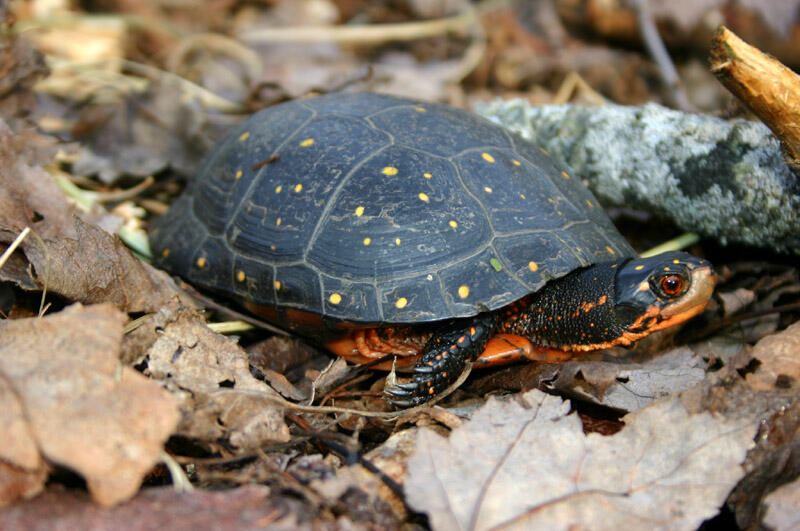- Division of Fisheries and Wildlife
- MassWildlife's Natural Heritage & Endangered Species Program

Westborough — MassWildlife will receive $40,000 in Competitive State Wildlife Grant funds to focus on Spotted Turtle conservation and management efforts within Massachusetts. Funds received by Massachusetts are part of a multistate, collaborative effort to develop a status assessment and adaptive conservation plan to support healthy Spotted Turtle populations and manage habitat from Maine to Florida.
Spotted Turtles range from southern Maine and Quebec, westward to Illinois, and southeast to northern Florida. Although widespread in the eastern United States, it’s an uncommon—but not rare—species in Massachusetts. Once listed as a Species of Special Concern under the Massachusetts Endangered Species Act, Spotted Turtles were removed from the list in 2006 due to a widespread distribution in the state and the existence of relatively stable populations in southeastern Massachusetts. However, residential development construction alters the wetlands and upland habitats that Spotted Turtles rely on. Monitoring, and properly managing, Spotted Turtle populations in southeastern Massachusetts is important to the long-term persistence of the species throughout the region. MassWildlife biologists will use grant funds over two years to assess the population status of Spotted Turtle across the state, restore habitat at regionally significant sites, coordinate a regional genetics study, and assist in the development of a Spotted Turtle Regional Conservation Plan.
Spotted Turtles are relatively small, reaching only five inches in length. Their name comes from the distinctive bright yellow spots that dot their otherwise black carapace (the top of their shell). The pattern and number of spots is unique to each turtle and can be used to identify individuals. Spotted Turtles occupy a wide range of shallow, seasonal, and temporary wetlands in Massachusetts, including vernal pools, shrub swamps, cranberry bogs, emergent wetlands, and ditches. Spotted Turtles can be hard to find; their cryptic behavior and preference for ephemeral and seasonal wetlands means that these turtles are encountered much less often than the widespread and common Painted Turtle and Snapping Turtle. However, they are native to all of Massachusetts’ counties and are found on many offshore islands, including both Martha’s Vineyard and Nantucket.

